Free French Fighter
This the fourth of six P-40s I built early in 2023 for a club display for the Australian Model Expo. I built them as one group of three and a second group of four. The seventh aircraft was not finished in time for Expo but is now completed.
-
Free French Fighter
Subject
This model represents the mount of Com. Constantine 'Kostia' Rozanoff of GC II/5 'Lafayette' flying from Thelepte, Tunisia in January 1943.
With the French surrender to German forces in 1940, the country was split, with the north occupied by the Germans and the south, plus the African territories (including Morocco, Algeria and Tunisia) were governed by the collaborationist government in Vichy, led by Marshal Philippe Petain. In opposition to this, General Charles de Gaulle led a ‘Free French' government in exile from London.
When American forces landed in Morocco and Algeria on the 8th of November 1942, they were initially opposed by Vichy forces. Soon, however, the majority of these forces switched sides and joined the Allies under the Free French banner.
In late November, GC II/5 (Group de Chase – Fighter Group) swapped its Curtis Hawk 75 (P-36) fighters for 36 second-hand US P-40Fs, with the official transfer occurring on the 9th of January 1943 at Casablanca. The Group participated in the drive to Tunisia that saw the Axis forces expelled from Africa in May. By March, however, only 7 of the original 36 P-40Fs were serviceable and the group re-equipped with P-40Ls.
Com. Constantine 'Kostia' Rozanoff was born in Poland but became a French citizen in 1927. He was second in command of CG II/4 in the Battle of France and served with the Vichy Air Force in North Africa after the armistice, eventually switching sides and taking command of GC II/5 'Lafayette' on the 21st of November 1942, leading them in combat until the end of the Tunisian campaign.
After a stint as assistant director of the flight schools in North Africa he took command of CG II/5 on the 21st of November 1942. He flew P-40F-5 "White 13" during the first phase of the Tunisian campaign and named his aircraft "MADKOT", combining his wife's and his own names (Medeline and Kostia). The serial number of the aircraft has been variously claimed to be 41-14289, 41-1349 and 41-14369. The kit provides decals for the latter.
On 16 May Kostia transferred to command II/3 and in December left North Africa for Britain to attend test pilot school.
Post war he worked for Dassault and became the first French pilot to break the sound barrier while flying a Mystere IV. He lost his life in the same plane on the 3rd of April 1954 when attempting to break the sound barrier at ground level during a flying display. An electrical servo motor in the stabilizer failed, causing the aircraft to nose in and crash.
With the start of production of the famous Rolls Royce Merlin engine by Packard in America, Curtiss decided to replace the Allison engine of the P-40E in the hope of achieving improved performance. A difference in carburettor configuration between the engines led to the intake being moved from the top of the cowling and into a redesigned radiator scoop under the nose.
The first batch of P-40Fs retained the rear fuselage of the P-40e, but from the P-40F-5 block onwards the vertical tail was moved further aft to restore directional stability with the greater power of the Merlin. The performance improvement was not as great as had been hoped, although there was worthwhile gain at altitude.
Construction
I built two of these kits in parallel, this one as a P-40F-5 and the other as a Kittyhawk IIB (P-40L).
This is a Hobbycraft re-boxing of the AMT kit. The kit shares may parts with the AMT P-40E/K/N Allison powered kits, but with a new fuselage with the Merlin nose. It is generally accurate but there are a few things that need fixing.
Firstly, the seat is the same as for the first P-40N moulding, which is a square topped, flat backed seat that attached directly to the pilot back armour. However, P-40s up to the P-40M had round topped, and curved backed seats that were mounted on a framework that attached to the pilot back armour.
To fix this, I used the spare seat and framework from an Airfix P-40B/C. As this aircraft was came from US stocks, I added Eduard coloured US seatbelts. The rest of the cockpit was out of the box except for the gunsight.
The gunsight is nicely moulded in grey plastic, including the reflector glass. So, I cut this off and replaced it with a square of clear acetate.
A second problem is that the main wheel bays only have three sides, leaving them open onto the fuselage. So, I added simple flat piece of card stock to box them in.
The third thing to fix is filling the four holes under each wing that are meant for the wing bomb shackles that are only applicable for the P-40N.
Next, the kit uses inserts for the panels around the exhausts to allow for different configurations, but these are slightly too short. This is common with all the AMT mouldings I have built. I glued these to get the front of the nose square and then filled the gap the rear using “sprue goo” and a little filler.
The final, major issue is with the nose. The Merlin engine P-40F and P-40L had a different nose to the Allison engine aircraft. The kit correctly deletes the upper carburettor intake that characterises the look of the Alison powered models. The Merlin used an up-draught carburettor and this meant significant changes to the lower nose.
The kit includes a representation of the correct rectangular radiator and the two cylindrical oil coolers (that some have incorrectly identified as twin carburettor intakes) but does not include the lower central carburettor intake that usually had a dust filter extension to the front lip of the radiator housing. This filter had a butterfly valve opening that was closed when taking off.
That is easily fixed with a bit of plastic tubing, in this case sourced from a lollypop.
The major problem is the rear of the radiator housing. AMT provided a smooth fairing here that is nothing like the actual aircraft. On the aircraft, the rear of the radiator housing is split by the piping for the carburettor intake, with a pair of movable flaps either side for the radiator exhaust.
To fix this, I cut portions of the supplied fairing back to the flap line while leaving centre portion that covered the carburettor pipe and the portion on either side that faired into the fuselage. The carburettor pipe was represented using a split and flattened portion of the plastic tubing and the end of the cover was rounded at the point that the pipe bent to the vertical up to the engine on the aircraft. This gave a cover with the flaps in the neutral position (they could be closed into the outlet or opened out to adjust the airflow through the radiator).
All of this left a gaping hole up into the fuselage. To fill this, I cut a portion off a drop tank from a Su-57 to give a short cone section that I then faired-in to the fuselage sides with a pair of wedges from plastic sheet. This was blanked off at the front with a rounded piece of plastic sheet painted to represent the back of the radiator.
The remainder of the kit was built as per the instructions.
Painting and Markings
This aircraft was delivered in factory painted desert camouflage scheme of US equivalent (Dupont) Dark Earth (1), (Dupont) Middle Stone and (Dupont ) Azure Blue. For this I used Gunze Sangyo H37 Wood Brown, H71 Middle Stone and SMS PL74 Azure Blue (FS 35231). When the aircraft was delivered to the French, the US markings were painted out with fresh Dark Earth. I used my own mix of 50:50 H37 Wood Brown and H456 Staubbraun for this.
When handed over, the French roundels and tail stripes were painted using US paints meaning that the blue was the darker US Insignia Blue. The kit decals are the correct colours for this and are over all quite good quality. Unfortunately, the starboard tail stripe decal has cracked in a couple of places since it was applied.
The GC II/5 group insignia was a Native American head with a war bonnet over a diagonal green stripe. This is reproduced nicely in the decals but is missing the green stripe, so I masked and painted this before applying the decals.
A bit of weathering, exhaust stains and radio wire and it was done.
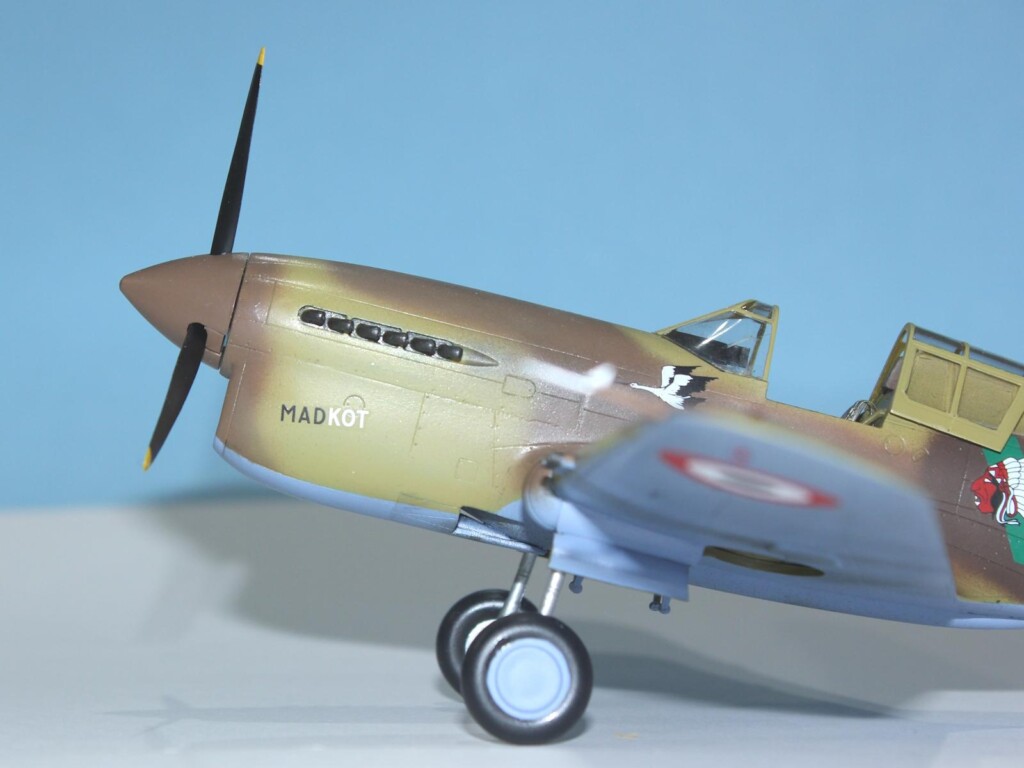





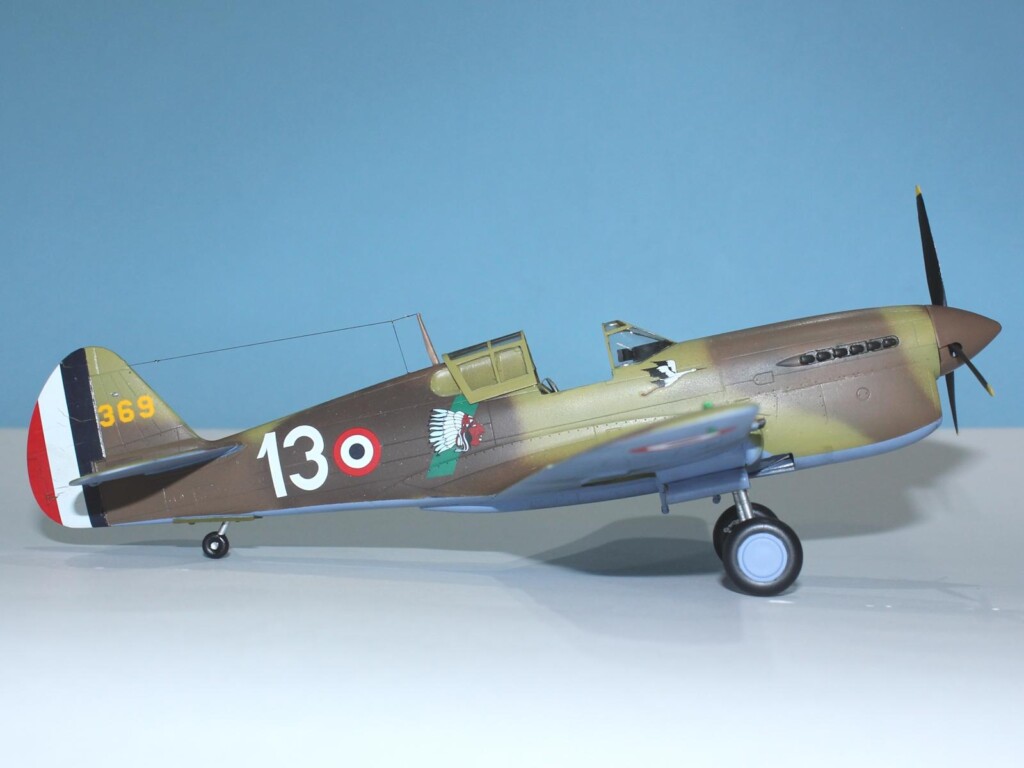

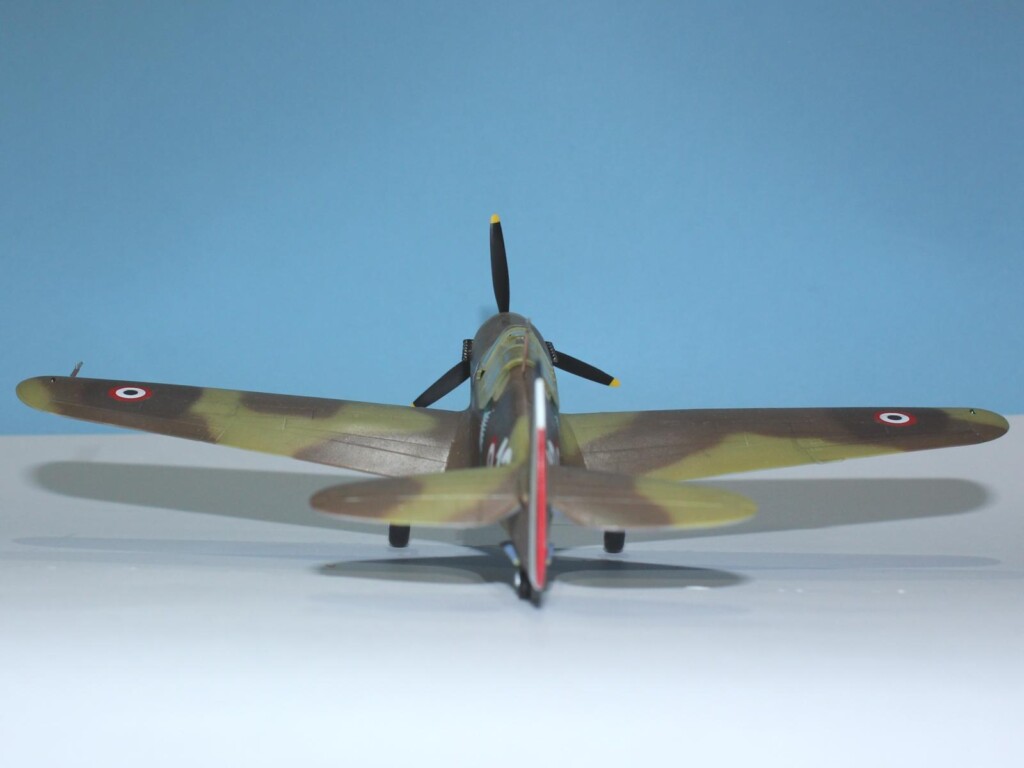







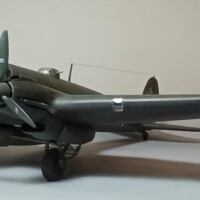
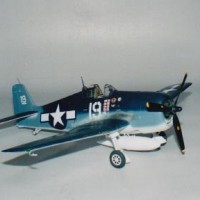
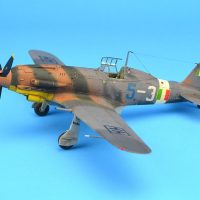
A great addition to your collection, Michael, your corrections to make this an accurate model were very well carried out.
G'day George (@chinesegeorge),
Thanks.
I have another short tailed F that I bought since, so I'll have to do the same again.
I am looking forward to an easy Eduard build when it comes out, though.
Another beautiful P40 can be added, Michael @michaelt
Lots of nice details and great scheme.
G'day John (@johnb),
Thanks for following along, as always.
Good looking P-40 in French markings. I need to add a French Warhawk to my collection!
G'day Greg (@gkittinger),
Absolutely, you should.
I'll look forward to it.
Nice work on this @michaelt.
One minor correction to the history (I just wrote a book on the topic, coming out in May). GC II/5 flew Curtiss Hawk 75s. They offered the most resistance to the invasion and were involved in numerous combats with the Wildcats of the two squadrons - VF-41 and VF-9 - aboard Ranger. Thelepte was a special forward base where GC II/5 and the 33rd Fighter Group (the Nomads) harassed the Germans until the base was overrun by the Afrika Korps during the Kasserine Pass battle. Phil Cochran was in the 33rd and Thelepte gave him the idea that later resulted in the Air Commandos.
G'day Tom (@tcinla),
I knew that. I have no idea why I wrote D.520.
I've made the correction.
This book on North Africa has been an eye-opener for me, to see how the USAAF really did "learn to walk and then to run." And the Free French of GC II/5 were a real "front line" bunch.
Nice work on my favorite version of the P-40 I'm really looking forward to Eduard's new release later this year.
G'day Dale (@dtravis),
I have since bought another 7 P-40 kits, so I think the modelling community can thank me for Eduard's decision to do the P-40 next. 😊
I can't wait for them either.
Excellent job, Michael!
G'day Spiros (@fiveten),
Thanks for following along as well.
That is a very impressive conversion project Michael (@michaelt) - well done. It looks awesome 😀
G'day Scott (@scottiya),
Thanks for your kind comments.
I'm very happy with how it turned out.
Nice work, Michael!
G'day John (@j-healy),
Thanks for your kind comments.
Great work Michael!
G'day David (@davem),
Thanks for your kind comments.
Beautiful work on this model. Camouflage looks great. @michaelt
G'day John (@jtruby),
Thanks for your kind comments.
I enjoy researching the correct colours and replicating the details of camouflage schemes more than the build itself.
great!
G'day Lis (@lis),
Thanks for looking.